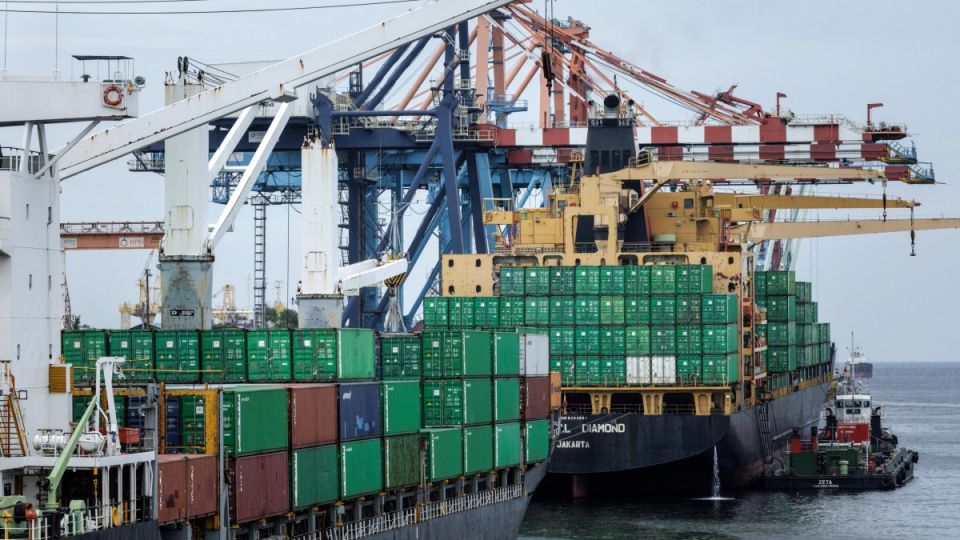July 2, 2025
JAKARTA – Indonesia recorded a hefty trade surplus of US$4.3 billion in May, fueled by a surge in exports of vegetable oils and steel, according to data from Statistics Indonesia (BPS) released on Tuesday.
The figure marks a sharp rebound from the modest monthly surplus in April of around $160 million, the smallest in five years.
“The trade surplus in May was supported by non-oil and gas commodities such as animal and vegetable oils, mineral fuels, as well as iron and steel,” Pudji Ismartini, distribution and services deputy at BPS, told a press conference.
The non-oil and gas segment recorded a surplus of $5.83 billion while oil and gas ran a $1.53 billion deficit, driven mainly by an increase in imports of refined fuels and crude oil.
Overall exports in May grew 9.68 percent year-on-year (yoy) to $24.61 billion.
Shipments of animal and vegetable oils soared 63 percent yoy as crude palm oil (CPO), the country’s top commodity, raked in export earnings totaling $1.85 billion.
Exports of steel and electric machines jumped respectively 27 percent and 45 percent compared to the same period last year.
Read also: RI barely holds onto trade surplus in April, exports to US down sharply
Imports meanwhile grew 4.14 percent yoy to $20.31 billion led by increases in capital and consumer goods, with the former surging 24.85 percent yoy and the latter ticking up 5.28 percent.
In contrast, imports of intermediate goods fell 1.18 percent, in line with continuing weakness in domestic manufacturing activity.
The Indonesia manufacturing Purchasing Managers’ Index (PMI) from S&P Global, released on Tuesday, dropped to a reading of 46.9 in June from 47.4 in May, indicating a further deterioration in the health of goods-producing industries.
The report showed a continuing decline in materials purchases and inventory, with both raw materials and finished goods falling for a third straight month.
Although input cost inflation eased to its slowest pace since October 2020, firms reported ongoing pressure from higher prices of raw materials.
Read also: Indonesia to relax import rules as US tariff deadline nears
The United States has been the largest contributor to Indonesia’s trade surplus over the first five months of the year with $7.08 billion, up 31 percent from $5.37 billion recorded in the January-May period last year, led by imports of electric machines, footwear and garments from Indonesia.
The increase has raised questions about the ongoing tariff negotiations between Jakarta and Washington, with the White House pushing for fairer trade between the two countries.
Jakarta has proposed increasing imports of US-made food and fuel, easing import restrictions and pursuing investments in the US to help balance bilateral trade and to placate the White House amid US President Donald Trump’s threats of steep “reciprocal” tariffs.
Hosianna Evalita Situmorang, an economist at private lender Bank Danamon, said in a statement on Tuesday that the surge in exports was stronger than expected.
“Temporary front-loading during the 90-day US tariff pause under Trump’s trade stance boosted momentum,” Hosianna stated.
However, she pointed out that despite the contracting PMI, imports also grew for the fourth consecutive month, indicating stable domestic demand and preemptive inventory building.


